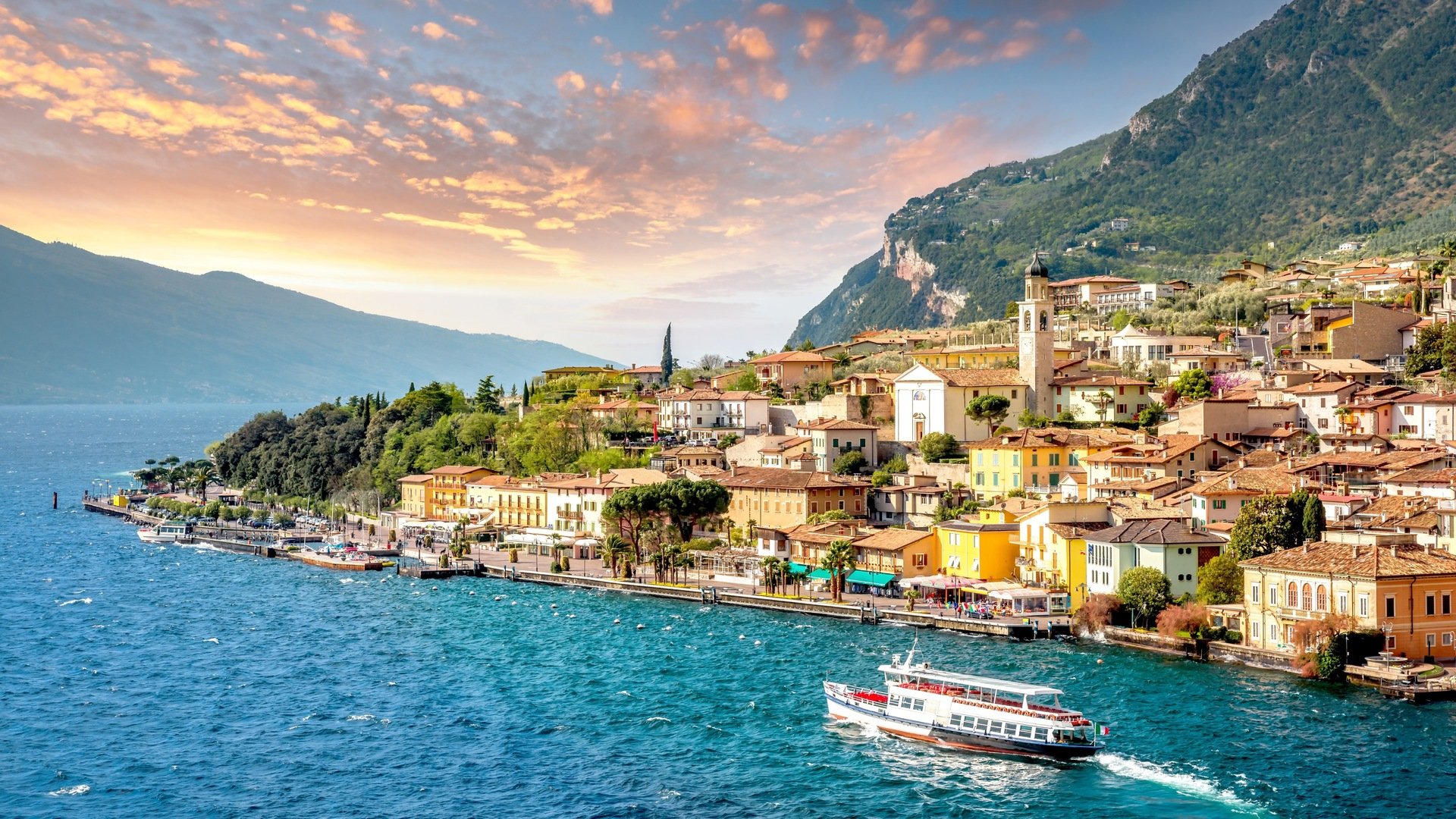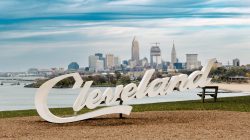A Journey Through the Enchanting Lake Garda
Lake Garda, larger than Lake Como and gentler than the rolling Adriatic, stretches its ever-changing shores between snow-capped peaks and sun-drenched lemon groves. This natural wonder offers a rich tapestry of contrasts across three regions, captivating travelers with its discreet elegance.
Located on the border between Trentino, Veneto, and Lombardy, Lake Garda is a place where beauty takes many forms. Its landscapes range from wild to glamorous, echoing both the Riviera and the borders of Bavaria. To the north, the Alps shape a mineral fjord, while to the south, the hills curve into flower-filled gardens.
Since ancient times, the lake’s clear waters have attracted those with refined tastes. The Roman poet Catullus once owned a villa in Sirmione, and Goethe was enchanted by its charms. Nietzsche, D’Annunzio, and Thomas Mann have all left their mark, either through words or silence. Between sky and mountains, beaches and suspended villages, Lake Garda cannot be visited—it must be experienced.
Sirmione: Fortress on the Water and Thermal Town
Sirmione emerges like a mirage on a slender peninsula. Its 13th-century castle, surrounded by a moat and flanked by crenellated towers, seems to float on the blue waters of the lake. Further along, the ruins of the Roman villa known as the “Grottoes of Cattulus” face the waves. However, the soul of the town lies in its sulphur-rich thermal baths, which have made it a premier destination for leisure and health since Roman times.
The cobbled streets lead to cafés, ice-cream parlours, and terraces where the scent of jasmine flowers mingles with that of arancini. Sirmione avoids the exuberance of seaside resorts and the sterility of museum towns. Everything here exudes a kind of timelessness—the thermal baths, ochre walls, and untamed bougainvillea. Even the tourists keep to hushed tones, drawn in by the gentleness of the place.
Malcesine and Riva del Garda: Mountainous Beauty and Alpine Winds
As you travel along the eastern shore, the scenery changes dramatically. In Malcesine, pastel facades crowd around a castle set on a rocky outcrop. A funicular climbs up to Monte Baldo, where meadows carpet the mountain and the view encompasses the entire lake. Malcesine combines Venetian charm with Alpine ruggedness in rare harmony.
Further north, the Austro-Hungarian elegance of Riva del Garda comes into view. Lined with palm trees and surrounded by cliffs, it attracts lovers of water sports. The steady winds known as Pelèr and Ora create perfect conditions for sailing, kitesurfing, and windsurfing. But the city is also a magnet for travelers due to its palaces, museum in the ancient fortress, public gardens, and old-fashioned bookstores.
Limone, Gargnano, Salò: On the Forgotten Roads of the West Bank
The wilder west bank follows the bottom of steep cliffs. At Limone sul Garda, the terraced lemon groves are a reminder of ancient trade routes with the Orient. The limonaie, 18th-century citrus groves, crowd the slopes, either restored or left to grow wild. The village still buzzes with the scent of sun-warmed lemon rinds.
Further south, Gargnano exhibits its villas with secret gardens. The ancient Palazzo Bettoni lines the shore, while the baroque church of Santa Maria Maggiore stands over the boats moored here. This elegant town still upholds the tenets of la dolce vita and was favored by the likes of Churchill and D.H. Lawrence.
Finally, to close out the journey, visit Salò, a quiet town with a rich past. Its kilometre-long lakefront comes alive in the evening under the light of the lanterns. Its Renaissance Duomo, violin shops, and walks under the cypress trees are a reminder that Lake Garda, while far from clichés, remains an unadulterated promise of Italian beauty.







